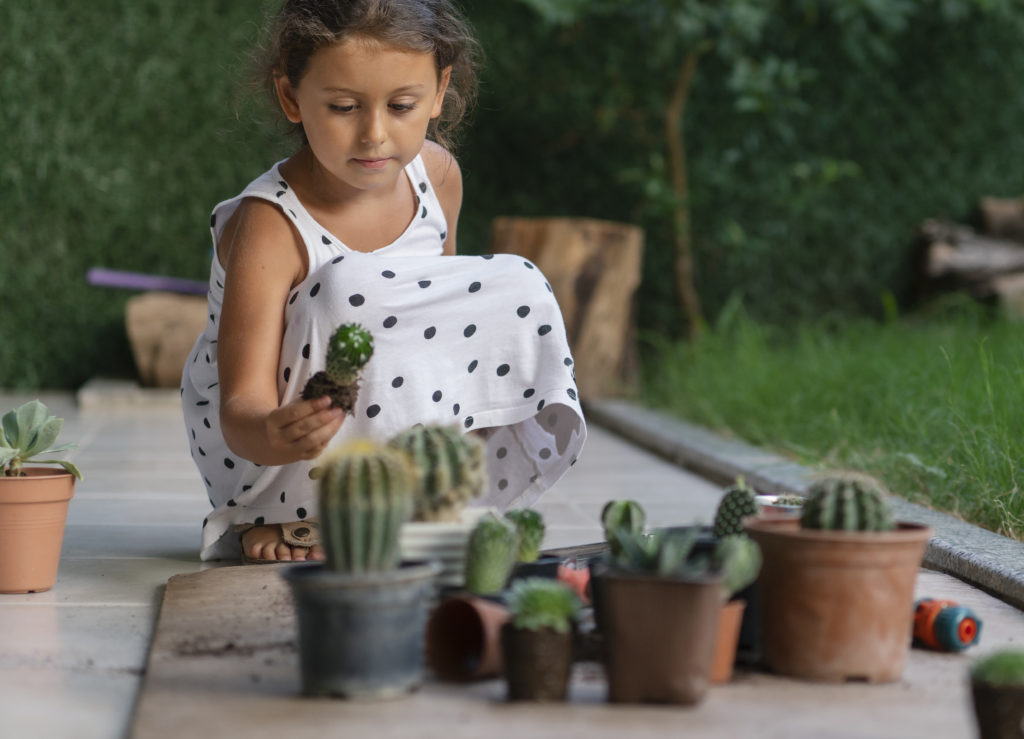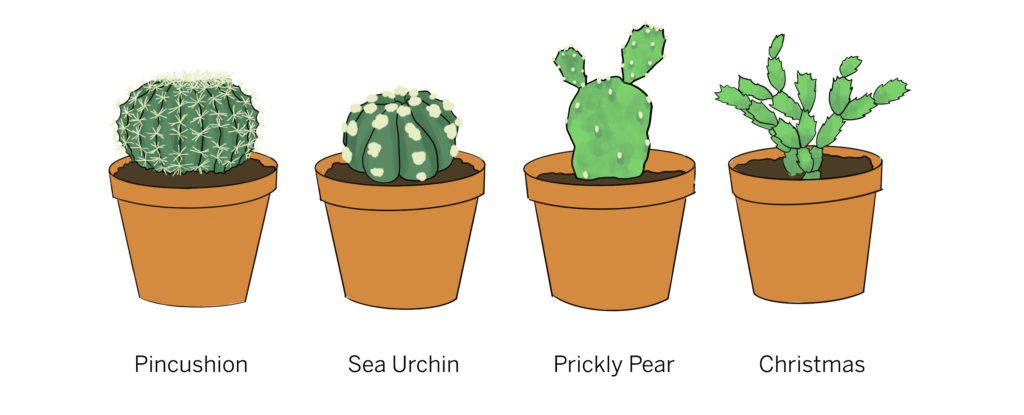Cactus Gardening for Kids
If your kid has a budding green thumb, growing a small cactus garden can be a great way to get them started on a gardening adventure. Cacti are easy for kids to tend to, and it’s rewarding when they bloom. Practicing lessons such as watering and monitoring sunlight for a small, low-maintenance garden is a great way for kids to have fun and exercise responsibility. Here’s a guide to help you get your kids started on their own cactus garden at home.

1. Choose Your Containers
The great thing about cacti is that they thrive in containers. This allows you to start a cactus garden anywhere. It’s also the easiest way to provide a manageable responsibility for kids.
The size of the containers is critical. When you buy a cactus, the seller will generally indicate what diameter pot it requires. To allow for growth, there should be ¼” between the succulent and pot. Be mindful if your species tends to grow horizontally or vertically, and size the pot 10% larger. Cacti generally have shallow roots and are slow growing, so depth is less of a concern. However, if their roots begin to push against the pot, consider repotting.
2. Ensure Proper Drainage
Drainage is very important for healthy cacti, which don’t require much water. For this reason, one of the most popular choices are terra cotta pots. It is very easy to monitor moisture levels in these pots since the pot turns a darker color when watered. You can also drill holes in the bottom of tin cans or small paint buckets.
3. Decorate!
Decorating your proper planters would be a great family activity. Not only is it fun, but it will also get kids excited about their new responsibilities in caring for these plants. They can decorate and label pots with the species of cacti and even name their new succulent friends. Try these fun plant-marker ideas once you’ve planted your cacti.

4. Choose Your Cacti
Choose the right kind of cacti for your garden. This low-maintenance species is amenable to planters and thrives in Texas. You might even try to spot these cacti varieties out and about around Texas with the kids!
- Pincushion cacti are round with thick spine layers, usually with bright flowers. Texas varieties include the lacespine pincushion and the little pincushion.
- Sea-urchin cacti look like small, spiky, round pineapples with widely spaced thorns, often with flowering tops. These cacti are very easy to care for, making them an ideal choice for beginners.
- Prickly pear cacti have cylindrical trunks with flat, dark-green pads and hairlike needles. They often cluster and grow horizontally. They are also the official plant of Texas! (And they make for great recipes.)
- Christmas cacti have drooping, spiny branches with red flowers at the end. They thrive in most parts of Texas and are exceptionally resilient.
5. Give Your Cacti a Nice Bed
Cacti are easy to keep healthy, but there are several practices you will want to teach the kids before they take on that responsibility. Drainage is essential, and standard potting soil will not provide the drainage needed for cacti to survive. You may purchase cactus-specific potting mix at the store or mix 1/3 horticultural sand, 1/3 cactus compost, and 1/3 porous gravel. You’ll also want to provide cacti with a gentle, low-strength fertilizer from early spring to the end of summer.
6. Let Your Cacti Tan
All cacti should be kept in a fully sunlit area, so they get direct sun for at least six hours daily.

7. Watch the Watering
Avoid overwatering your cacti! This is the most important care practice — and usually the reason first-time succulent caretakers find that their plants fail. Cacti evolved to be drought-resistant and to go periods of time without access to water. This makes them particularly vulnerable to root rot. If your cacti are outside, be mindful of rain. Generally, if it is raining once a week or every other week, your cacti shouldn’t need watering. It is best to make sure they’ve had access to water once a week in the hottest months, but in the wintertime, access to water once every two weeks is perfectly acceptable.
8. Chart Your Progress
A cacti responsibility chart might help kids remember and track when they need to look after their succulent friends. Consider using fun stickers to track when cacti have been watered, fertilized, and when it has rained!
Learn more about finding and growing native cacti in Texas.
© 2021 Texas Farm Bureau Insurance



